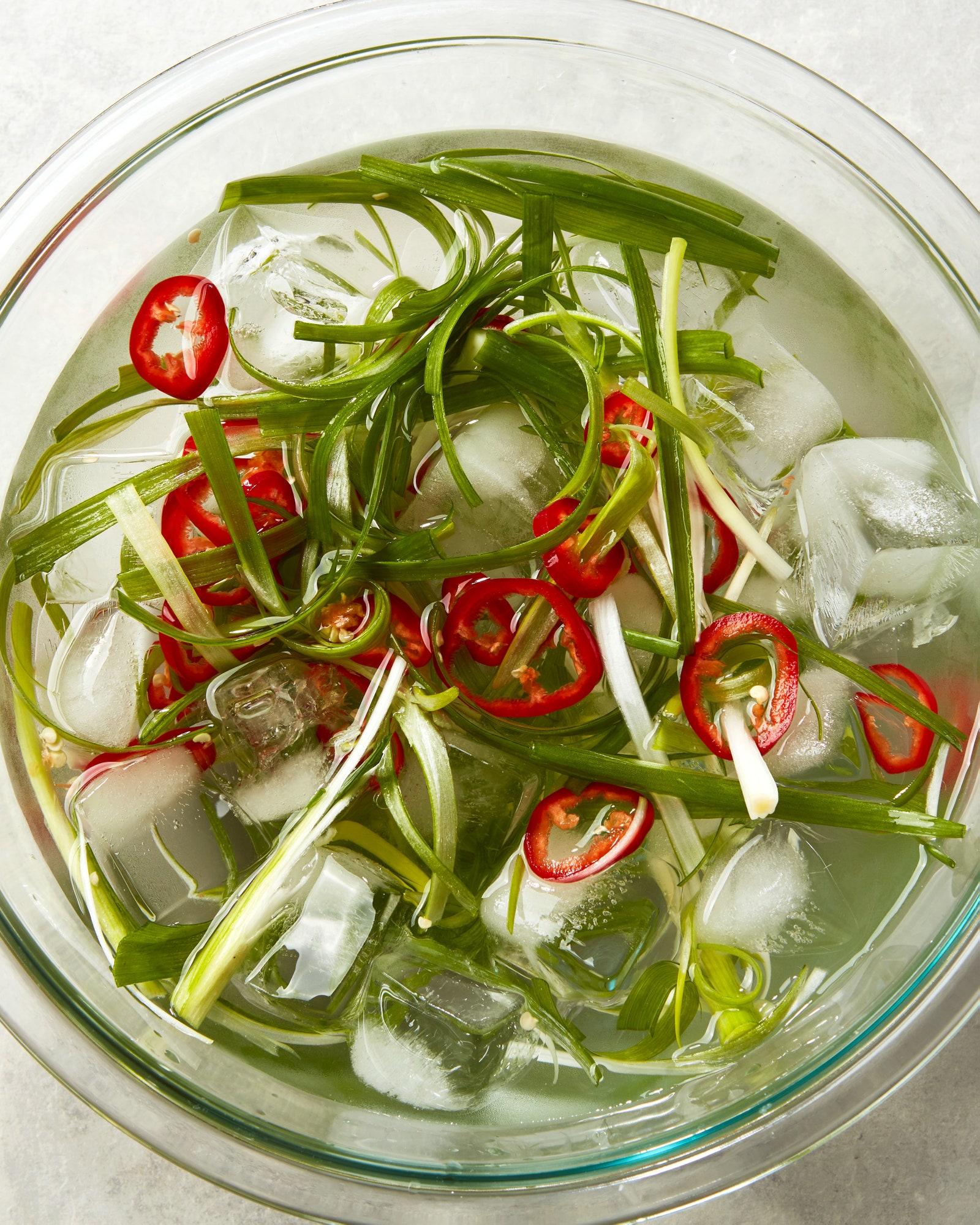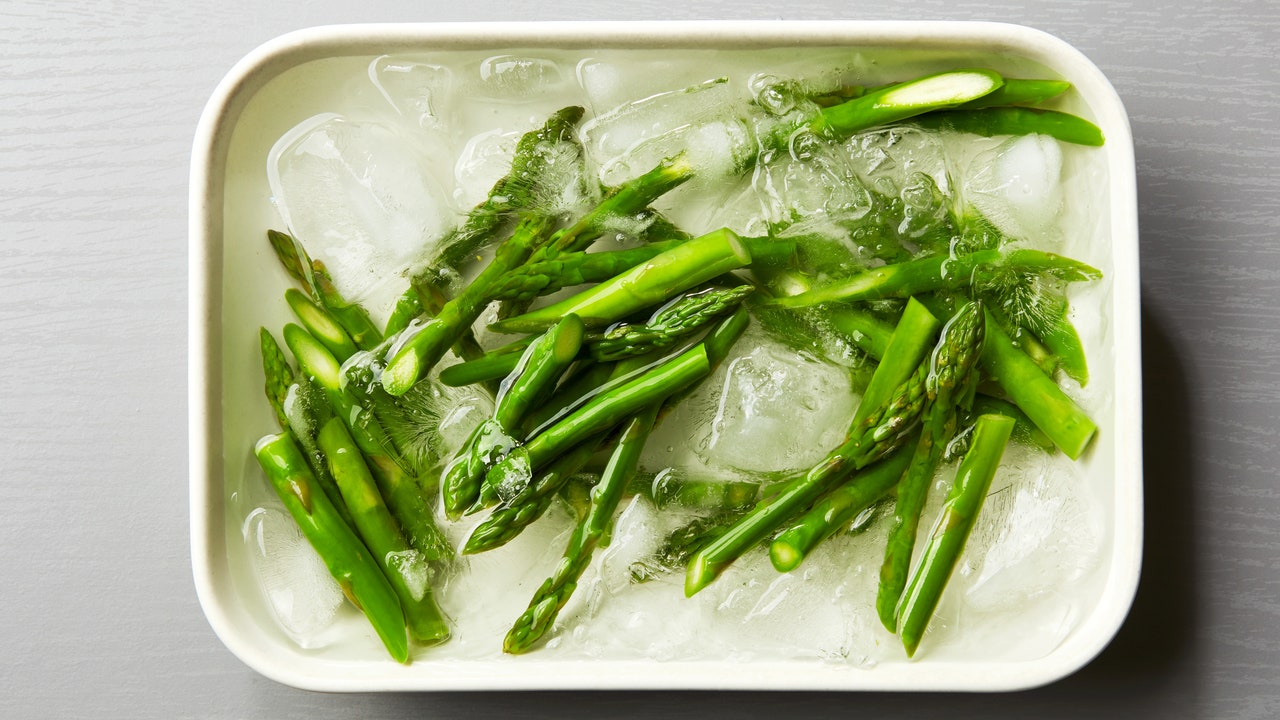An ice bath is one of the unsung heroes of my kitchen, but I haven’t always given it the credit it deserves. When I’m cooking I almost always keep a big bowl of ice water nearby because it buys me time and maintains the quality of my ingredients. At its simplest an ice water bath can rapidly chill ingredients. And sure, a refrigerator can chill things too—but if you tried to chill a custard for ice cream in the fridge, it would take hours or even a full day, as opposed to minutes with an ice bath. When you’re working with delicate ingredients like a soft-boiled egg or freshly blanched green beans, the cooling power of a refrigerator simply can’t work fast enough.
I know some people view preparing an ice bath as a mundane, even unnecessary step that only delays the race to the recipe finish line. But hear me out: An ice water bath is more than just “a pretend pond on the kitchen table,” as a friend once called it. It’s an insurance policy for keeping ingredients looking and tasting their best. A bowl of ice water will make your vegetables shine, stay crisp, or even beautifully twist and curl—but it can also transform flavors and be the critical variable that makes the difference between a merely good and an excellent dish.
Let’s take a closer look and see why an ice bath should be part of your essential kitchen toolkit.
Give your vegetables the curly-ribbon treatment
When I’m putting a salad together, I set a big bowl of ice water on my kitchen island next to my cutting board. I’ll dunk the carrots, onions, lettuce, radishes, or whatever fresh produce I’m cutting straight into the water while prepping. Why? The cold bath keeps the cut vegetables from losing water, preventing them from turning limp. Once I’m done getting all the mise en place prepped, I’ll discard the water and pat the vegetables dry before tossing them with the dressing, ensuring beautiful, crunchy vegetables that won’t be soft when I eat them.
But that’s only one of an ice bath’s many tricks. Have you ever noticed those pretty little scallion curls that garnish fried rice or sushi at restaurants? It’s an elegant but simple technique that’s easy to recreate at home.

